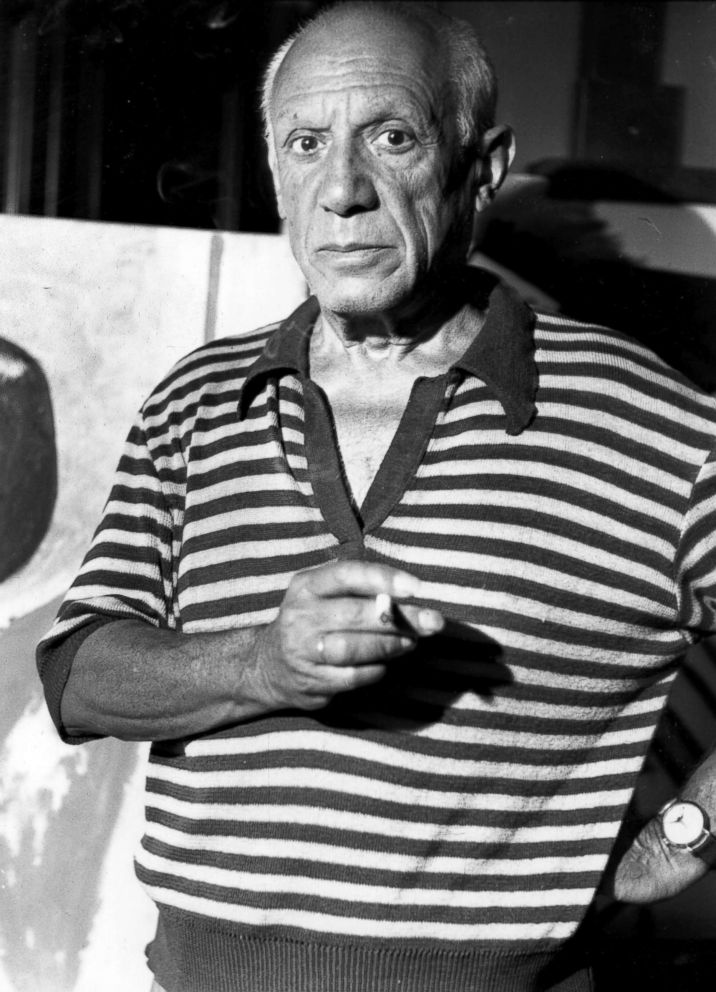How will investigators recover a Picasso stolen in Milwaukee?
Investigators say a Picasso etching stolen in Milwaukee is likely to be found.
— -- Fine art appraiser Michael Goforth was leaving his Milwaukee office Friday afternoon when he realized the Picasso etching that had been hung proudly in the lobby was suddenly missing.
“When you have some nice artwork, it jumps out if all of a sudden there is a blank spot on the wall,” Goforth’s partner Bill DeLind of DeLind Fine Art Appraisals told ABC News.
“I went back to the office and asked Bill if the Picasso was out on approval with a client. He said 'no' and the look we gave each other was priceless. At that time we knew what happened,” Goforth said.
The etching, handcrafted by the art legend Picasso in 1949 and printed on delicate Japanese nacre paper, is called Torero and depicts a bullfighter. It is one of just 30 prints created. The one stolen in Milwaukee was hung in a black frame and signed in the corner by Picasso himself with green crayon.
DeLind believes a thief walked into the lobby of his office, sometime between noon and 2 p.m. on Friday and simply snagged the artwork, estimated to be worth as much as $50,000, off the wall.

The art house shares a lobby with a law firm and a jewelry store and is open to the public. It’s outfitted with security cameras, but the cameras were not functioning on Friday and didn’t catch the suspect in the act.
Without surveillance video to finger the theft, Milwaukee police say they’re continuing to investigate and seek evidence. DeLind says investigators are looking at surveillance video from nearby businesses that might have caught the thief making his or her getaway.
How do investigators recover stolen art?
Robert Wittman, former FBI agent and founder of the FBI’s Art Crime team that investigates theft or damage to cultural goods, told ABC News investigators will be looking for fingerprints on the wall the painting was stolen from, as well as footprints in the area.
They will be figuring out who had access to the lobby and talking to people who were in the area at the time of the crime. They will also figure out if there was an insurance policy on the etching and who stood to collect money if that policy was called in.
Keys to the investigation
With no surveillance video from the lobby where the etching was swiped, any video obtained from outside the building could be key to identifying the suspect, Wittman said.
Wittman also said that investigators will be looking closely at why the surveillance cameras in the lobby weren’t working, how long they had not been functioning and who was responsible for maintaining the system.
“I think it’s interesting that the piece was taken in broad daylight out of the lobby in a building with a broken surveillance camera,” Wittman said. “It’s kind of suspicious.”
The key to recovering the etching will be putting out word to museums, art collectors and auction houses in the area, Wittman said.
Doing so effectively renders the art worthless and makes it likely it will be recovered, Wittman said.
“Stolen art is worthless,” Wittman said. “It’s a small collective market that can afford to buy these works of art and people who are in that market will know this piece has been stolen and will report it to authorities when it ends up back on the market.”
Pieces by Picasso are the world’s most stolen pieces of art with more than 1,000 active cases, Wittman said.
“He’s one of the most prolific artists,” Wittman said. “Just the word ‘Picasso’ has become an adjective for great art. If that etching has been signed by [a person named] Johnson, it probably wouldn’t have been stolen.”




